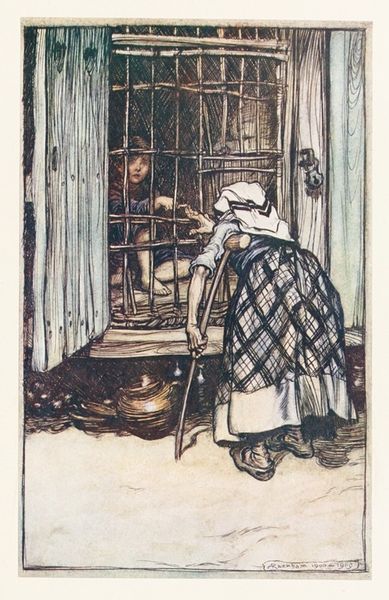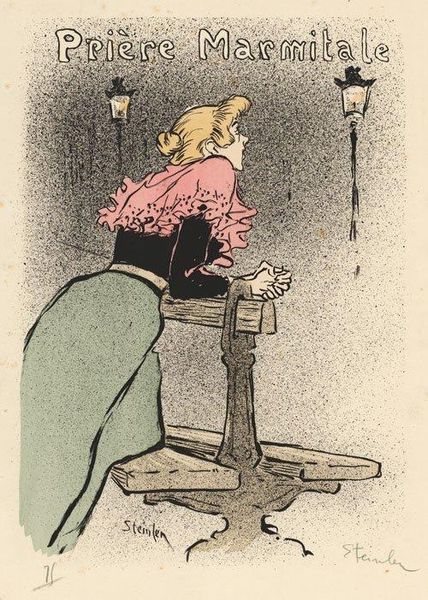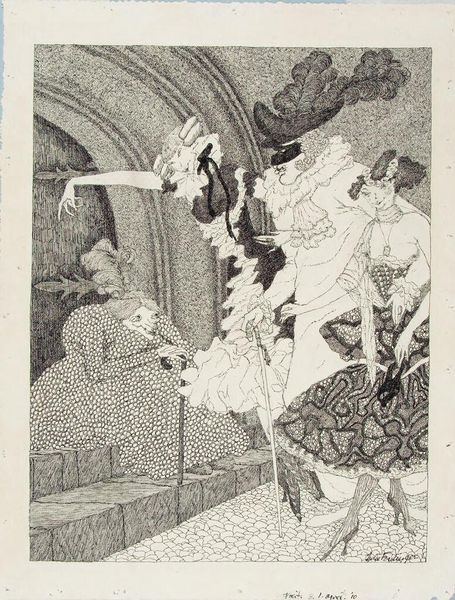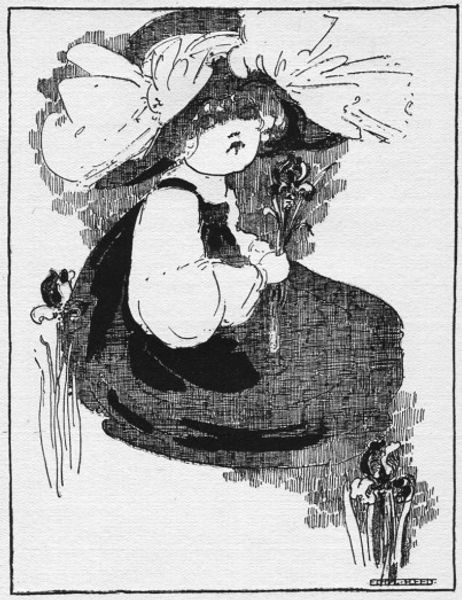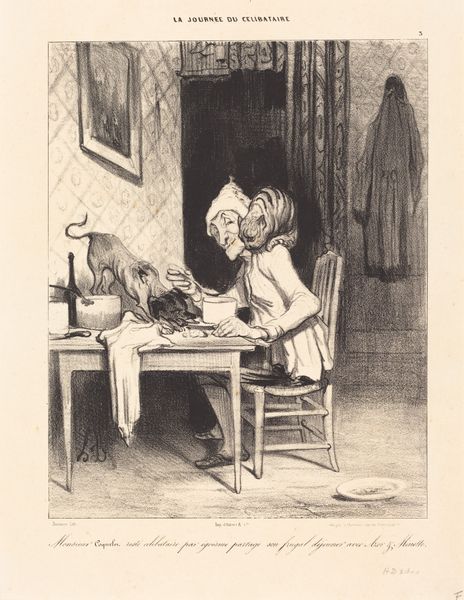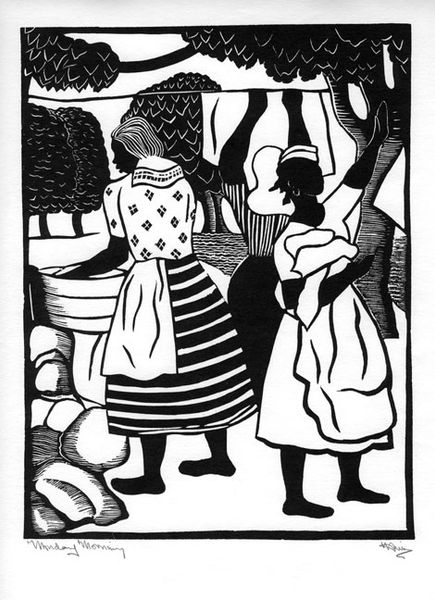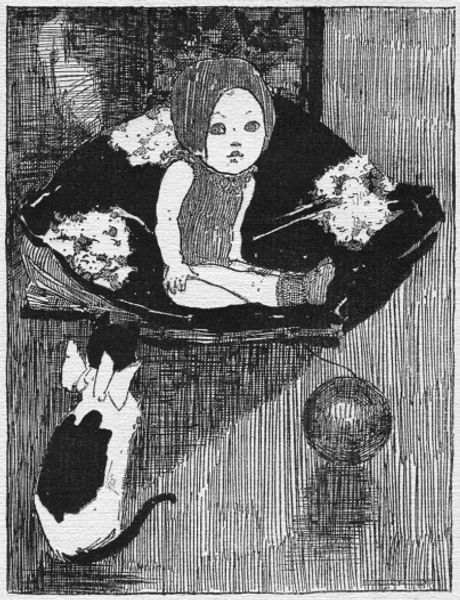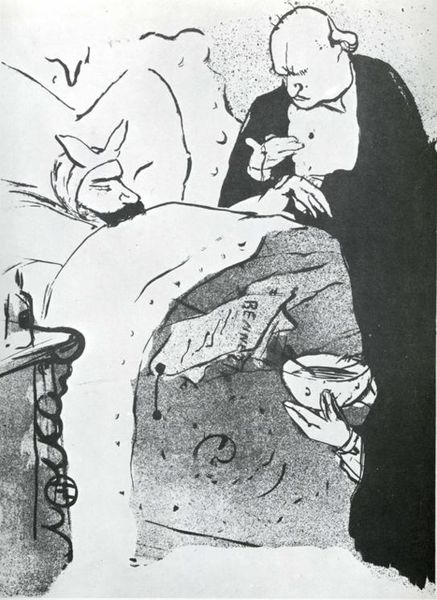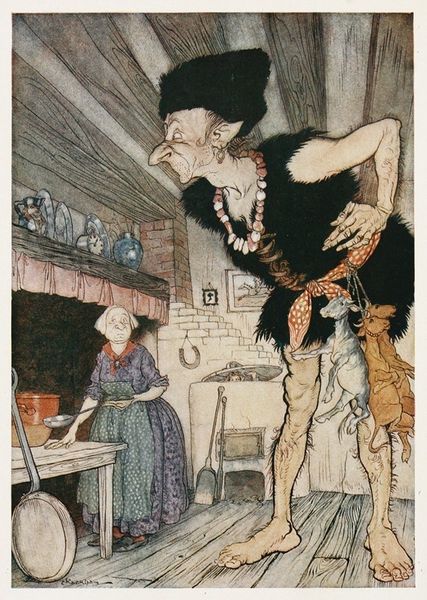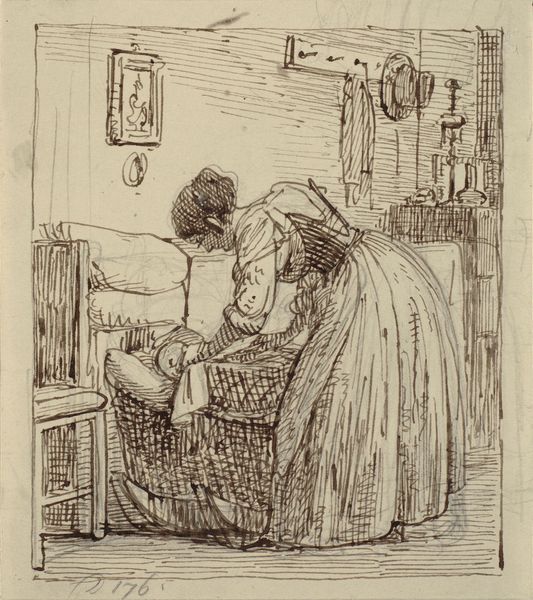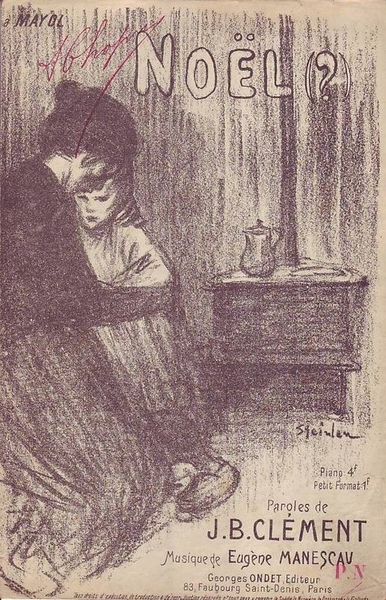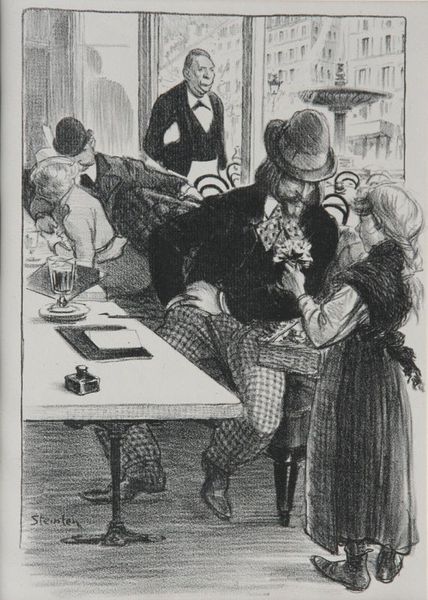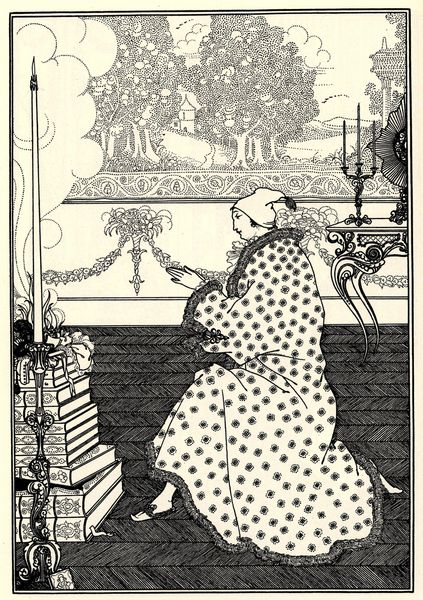
Copyright: Public domain
Curator: Looking at Théophile Alexandre Steinlen's "Les Femmes de France" from 1897, my first reaction is one of somber domesticity. It feels intimate and contained, largely due to the stark use of pencil drawing. Editor: The starkness resonates with me, almost a monochrome constraint dictating the scene’s overall tone. But I’m more struck by the obvious marks of labour: the material weight of their aprons and headscarves, presumably hand-sewn, and their engagement with what seems to be manual work. How do the subjects’ garb and activities highlight this? Curator: Well, structurally, their costumes and gestures contribute to a narrative— a clear class depiction of the working class. Their gaze direction guides our eye through the composition, hinting at both psychological tension and some narrative thread related to social stratification. Editor: And the materiality supports this. We see the clear, precise labor that defines their world, and how art functions within and sometimes challenges this social system. Take note, for instance, of the windowpanes and picture frame—the window probably being hand blown with uneven consistency and the picture being machine-produced for consumption, rather than spiritual edification. It underscores this era of industrial revolution! Curator: Precisely. Even the humble pencil as the medium serves to humanize, drawing attention to Steinlen’s gestural style rather than striving for academic precision; an acknowledgement of humanity perhaps? There is definitely symbolism at play here, the window is creating chiaroscuro contrast. Editor: Considering it is only a pencil sketch, one can't help but think about the material costs versus perceived value that may be attached to art. There's a clear implication in Steinlen's deliberate approach to form and materials that is about respecting these women as workers. It pushes back on what "art" could and should depict. The pencil line, then, becomes an instrument of this vision. Curator: Yes, Steinlen transforms the medium of pencil into a potent symbolic form. He encapsulates and explores so many complexities inherent in this representation of these working women in their quiet moment. Editor: The means, indeed, are just as meaningful as any intended ends. Thanks for discussing the work with me. Curator: The pleasure was all mine!
Comments
No comments
Be the first to comment and join the conversation on the ultimate creative platform.
